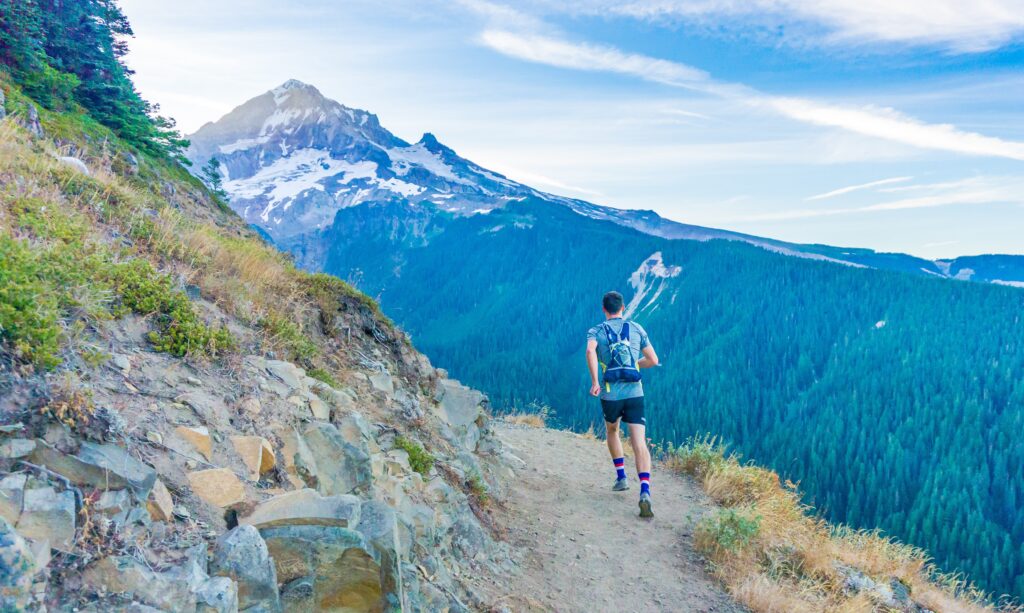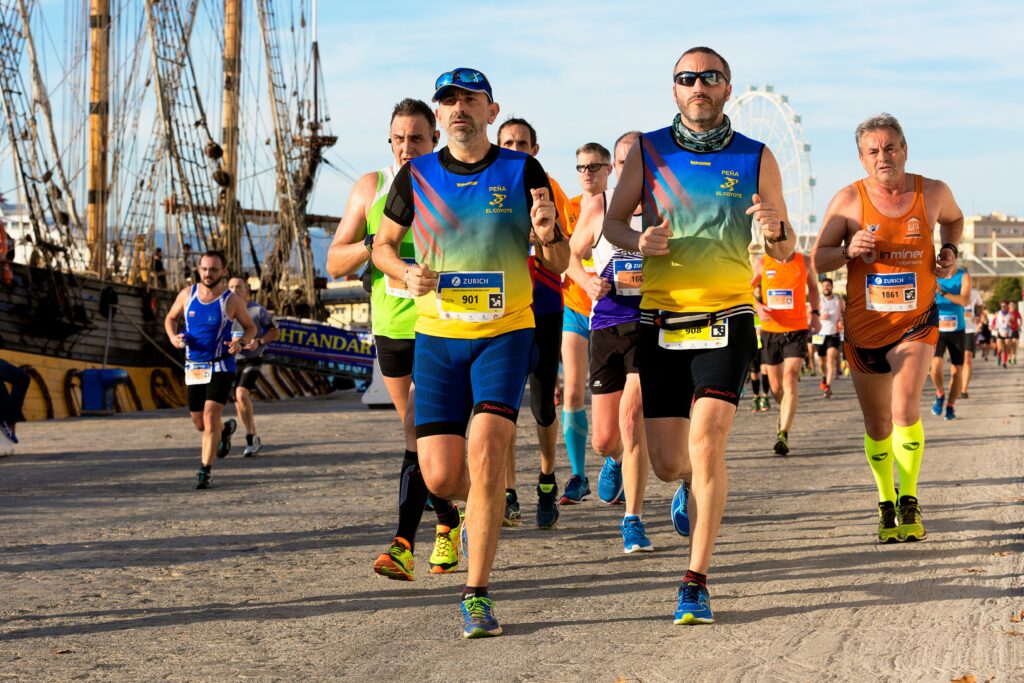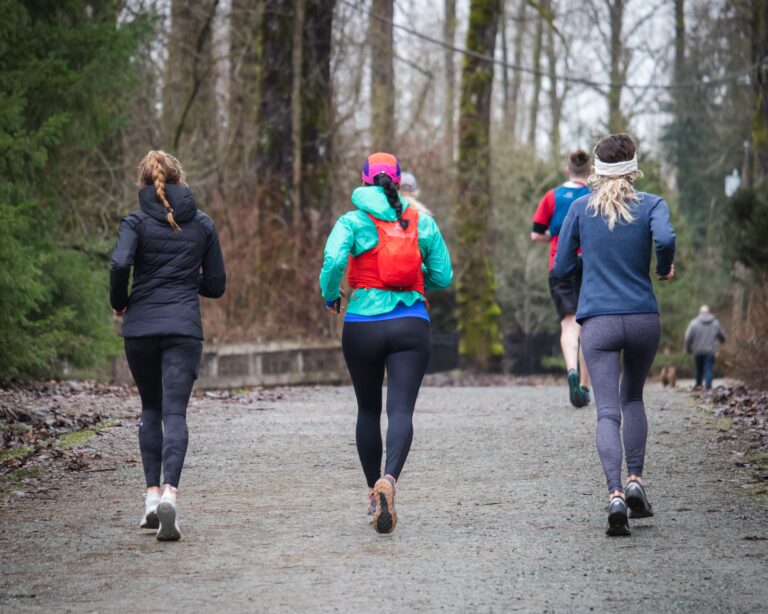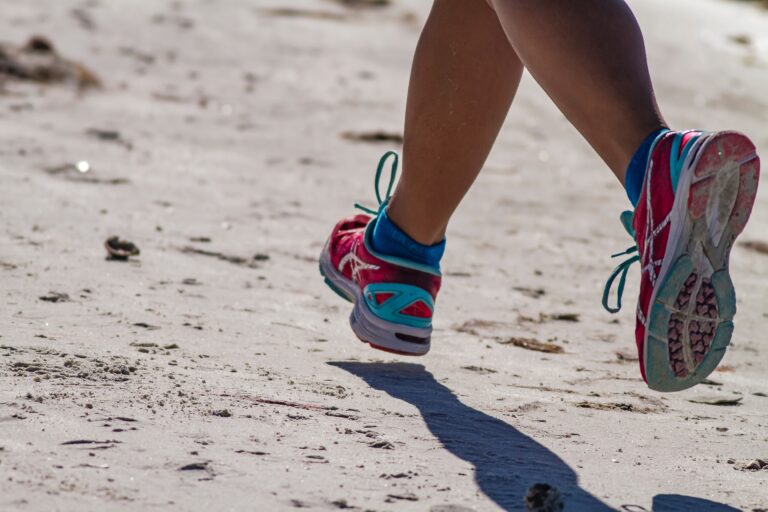What is Trail Running? The Complete Beginner’s Guide in 2025
Have you decided to take up trail running? Curious about road running’s counterpart? Read on to find out what is trail running?

Last Updated on 11 June 2025
If you’re considering taking up trail running, but aren’t sure where to start, you’ve come to the right place. Many people ask, “what is trail running?” and assume it means tackling high mountains or running ultra-distances, but that’s not necessarily the case. When I first started, I had similar misconceptions about what trail running involved!
As a steadily growing sport gaining popularity each year, trail running offers runners scenic views and challenging terrain, with distances ranging from 5K to 200-mile ultra races. According to 2024 data from Run Repeat, trail running has been growing at a rate of 12% year-over-year since 2010.
If you’re keen to get started, but aren’t sure where, this comprehensive trail running guide will answer all your questions. Here you’ll find the answers about off-road running, from basic techniques and essential gear to finding your local trail running community and preparing for your first adventure.

Read more: How to Motivate Yourself to Run in 2025: 12 Expert Strategies
What is Trail Running?
So, what is trail running? Trail running is an exhilarating form of off-road running that takes place on hiking trails, forest paths, mountain terrain, and other natural surfaces. Unlike road running, which occurs on paved surfaces, trail running involves navigating diverse landscapes, including:
- Forest paths and woodland trails
- Mountain running and fell running terrain
- Coastal paths and beach running
- Cross-country running courses
- Rocky and technical natural terrain
- Desert and canyon trails
Using the same data from Run Repeat, it found that since 2015, the number of trail races conducted each year, on average, is around 3,600. Famous races like the Ultra-Trail du Mont-Blanc (UTMB) showcase the sport’s appeal, taking participants on a challenging 100-mile journey through the majestic Alps, boasting an incredible elevation gain of more than 32,000 feet.
While I’ve never done the UTMB, this is one event I would love to experience, as it feels like the ultimate trail runner’s race.
What is trail running to me personally? After completing marathons on technical terrain, including the Glencoe Marathon Gathering in Scotland, which has an elevation gain of 5,275 ft over 26.2 miles and the XTERRA Snowdonia Trail Marathon in Wales, I can attest that trail running offers unique challenges that road running simply can’t match.
Read more: Choosing the Best Trail Shoes: Your 2025 Guide
Trail Running vs Road Running: Key Differences

Understanding the differences between trail running vs road running helps beginners transition effectively:
Surface Impact: Road running occurs on consistent, hard surfaces, whilst trail running utilises softer, varied terrain that reduces joint impact whilst providing better shock absorption.
Muscle Engagement: Trail running activates stabilising muscles, core, and upper body more extensively due to terrain variation, making it a superior outdoor fitness compared to repetitive road running patterns.
Mental Challenge: What is trail running’s biggest advantage? The constant terrain changes keep your mind engaged, requiring navigation skills and quick adaptation that road running lacks.
Equipment: Trail running requires specialised gear, particularly the best trail running shoes with aggressive traction, whilst road running needs minimal equipment.
Trail running provides an unparalleled opportunity for both physical and mental growth, and is one of the many reasons why I started trail running and why I think others should too.
Health Benefits of Trail Running for Beginners
As someone who’s experienced both road and trail running extensively, I can vouch for trail running’s incredible health benefits:
Physical Benefits: Trail running provides excellent cardiovascular exercise while building strength in your quadriceps, glutes, and calves from hill climbing. The varied movement patterns help prevent repetitive strain injuries common in road running.
Mental Health: The natural environment and mindful focus required for trail navigation provide excellent stress relief. I always find when I’m running through the trees, my mood improves and my mind clears. When you’re navigating trail terrain, you don’t have time to think of anything else!
Balance and Coordination: Navigating uneven natural terrain enhances proprioception and builds mental resilience that transfers to other areas of life.
Essential Trail Running Gear

Having the right gear makes the difference between an enjoyable trail run and a potentially dangerous situation. Here’s my recommended trail running gear based on years of experience:
Best Trail Running Shoes
Choosing the best trail running shoes is important for safety and performance. These are the key features that I look out for:
Traction: Aggressive lugs spaced appropriately for your typical terrain
Protection: Toe guards and rock plates protect feet from impact
Stability: Good heel support prevents ankle injuries on uneven surfaces
Durability: Reinforced uppers withstand brushing against rocks and vegetation
Personal recommendation: I wear Salomon or Craft trail shoes, as they’ve always provided me with excellent traction and support whether I’m mountain running, hiking, or doing speed work.
Trail Running Clothing and Accessories
Base Layers: Moisture-wicking fabrics like merino wool keep you dry and comfortable during outdoor fitness activities.
During the autumn/winter/spring months, I tend to wear gloves along with long leggings, a sports bra, a moisture-wicking vest and a long-sleeved top (not cotton) over that. If it’s raining, I’ll wear a running waterproof jacket. In summer, depending on how warm it gets in the UK, I’ll wear leggings or shorts, a sports bra, and a moisture-wicking top.
Safety Equipment:
- Hydration packs for longer adventures
- A GPS watch with offline maps
- Whistle for emergency signalling
- First aid kit with plasters and antiseptic
- Headlamp for early/late runs
- A fully charged phone
Trail Running Techniques for Beginners

Mastering proper trail running techniques for beginners improves performance and reduces injury risk:
Uphill Running Technique
Body Position: Maintain an upright posture with a slight forward lean from the ankles
Stride Adjustments: Take shorter, quicker steps rather than maintaining a flat-ground stride
Power Hiking: Don’t be afraid to walk steep sections – even elite mountain running athletes power hike when necessary
Downhill Running Technique
Body Position: Keep your body perpendicular to the horizon with a slight forward lean
Foot Placement: Land on midfoot with feet closer to the centre of gravity
Eye Focus: Look ahead to anticipate terrain changes on hiking trails
How to Start Trail Running: A Beginner’s Guide

Starting your trail running journey doesn’t have to be overwhelming. Here are some of the things I did when I decided to start trail running:
Week 1-2: Building Your Base
Start Local: Find easy, well-marked hiking trails near home. Local parks and forest paths are perfect for beginners.
Time-Based Approach: Focus on time rather than distance. Start with 20-30 minute runs.
Walk-Run Method: Alternate between running and walking, especially on hills.
Week 3-4: Developing Skills
Terrain Variety: Gradually introduce different types of natural terrain
Hill Training: Practice uphill and downhill techniques on gentle slopes
Longer Runs: Extend one run per week to build endurance
Technical Practice: Spend time on easier technical terrain, building confidence
Month 2+: Expanding Horizons
Distance Building: Gradually increase your longest trail run
Navigation Skills: Learn to use maps and GPS devices (some trail runs I’ve done require you to know how to use these)
Group Runs: Join local trail running community groups for motivation and safety
Trail Running Safety Tips
Safety should always be your priority when trail running. Here are essential trail running safety tips I follow:
Pre-Run Planning
Route Research: Study planned routes using OS Maps, AllTrails app, and local trail running websites
Weather Check: Always check conditions and forecasts
Tell Someone: Inform someone of your planned route and expected return time
Emergency Preparedness
First Aid Kit Essentials:
- Adhesive plasters and blister treatment
- Antiseptic wipes
- Emergency whistle
- Pain relief medication
Communication: Carry a fully charged mobile phone with emergency contacts programmed
Backup Plans: Have alternative routes and exit strategies planned
Building Your Trail Running Community

One of the most rewarding aspects of trail running is the incredible community you’ll discover. I was initially nervous about joining a local one, but there was no need as everyone made me feel welcome straight away.
Finding Local Groups
Running Clubs: Many road running clubs now have trail running sections
Online Communities: Facebook groups, Meetup.com trail running groups (I joined a few of these when I was starting), and Strava local segments
Specialist Clubs: Many areas have dedicated trail running community groups focusing on off-road running
Trail Running Events
Participating in trail running events is excellent for challenging yourself:
Beginner-Friendly: 5K and 10K trail races, charity trail challenges
Intermediate: Half-marathon trail races, multi-day events, fell running competitions, cross-country running events
Advanced: Ultra-running races, multi-day stage races, mountain running championships
Participating in Trail Races and Events
Taking part in trail races and events gives you a fantastic opportunity to put your skills to the test, push your limits, and meet other trail running enthusiasts. Here are six of the most exhilarating trail running races and events around the globe:
Ultra-Trail du Mont-Blanc (UTMB) in France, Italy, and Switzerland: Known as one of the most challenging trail races in the world, it takes participants on a 100-mile journey through the stunning Alps
Western States 100 in the USA: This 100-mile endurance run through California’s Sierra Nevada mountains is the world’s oldest 100-mile trail race
Marathon des Sables Legendary in Morocco: Often called the toughest foot race on Earth, this 11-day, 251km ultramarathon is approximately the distance of six regular marathons
Kepler Challenge in New Zealand: This 60km mountain run takes place in the Fiordland National Park and is known for its stunning views and challenging terrain
Patagonian International Marathon in Chile: This marathon takes place in Torres del Paine National Park, offering breathtaking views of the Patagonian wilderness
The Big Five Marathon in South Africa: This unique marathon happens in the Entabeni Game Reserve, offering runners the chance to race alongside Africa’s most famous wildlife
Which one do you want to try?
Final Thoughts on What is Trail Running?
So, what is trail running? For me, it’s a time to escape while running through trees, jumping over tree roots, and navigating myself around a course that takes my mind off everything else. Since starting, trail running has changed my relationship with running and the outdoors. What started as curiosity about this alternative to road running has become a passion that’s taken me through the Scottish Highlands, the Welsh mountains, and countless local forest paths.
And I’m just getting started!
Trail running offers something unique – whether you’re seeking new fitness challenges, ways to explore outdoors, or simply more engaging nature running. The beauty lies not just in physical challenge, but in mental clarity, connection with natural terrain, and the incredible trail running community you’ll discover.
Remember, every expert was once asking, “what is trail running?” The most important step is the first one onto the trail. So grab your trail shoes, plan your first route, and discover what this incredible outdoor fitness activity can offer you.
You’ll wonder, just like I did, what took you so long to discover trail running, and you’ll finally be able to answer the question of: “what is trail running?”
For more outdoor inspiration, check out our related guides:
- Hiking with Children: The Best Guide for Parents in 2025
- The Best Hiking Gear for Kids of All Ages in 2025
- Hiking with Toddlers in 2025? Read These Handy Tips First
Happy running!
Have you found this guide on what is trail running helpful? What else do you think we should include? Share your thoughts in the comments below!



I’m a beginning runner, and I enjoy hiking, but at this point, trail running feels like something that I’m quite ready to try. I liked how you broke down the basics. Reading this post made me feel like trail running might be more approachable for a beginner like me.
Thank you! I love trail running because it distracts you from running. Most of the time, I’m too busy focusing on where my feet are going rather than how many miles I need to complete. I’m glad you found it useful.
Currently training for my first road semi-marathon, but I feel that trail running is something that I could really enjoy, as I looove being outside and in the forests! Super interesting article:)
Good luck! I love trail running and being amongst the trees, and it helps with my road running as well : )
Great article. I’ve never heard of trail running before. I’m more of a walker, but would love to get into this. It sounds amazing. Thanks for sharing.
Thank you! I love it! If you do get into it, I hope you enjoy it : )